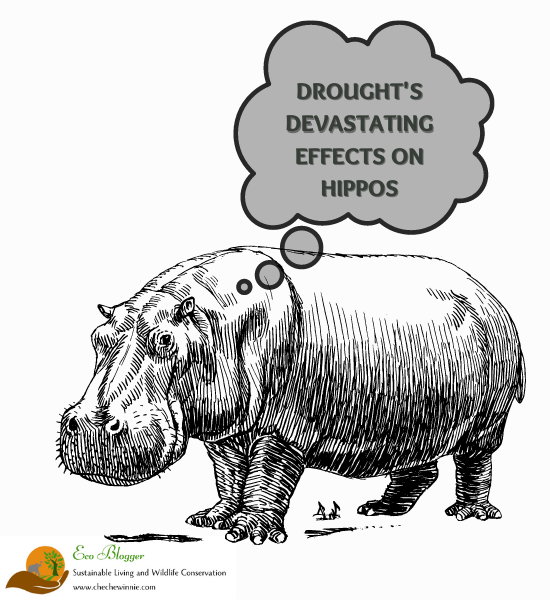Drought is a natural disaster that occurs when there is a prolonged period of inadequate rainfall. It affects not only humans but also wildlife, including hippos. These majestic animals, known for their massive size and unique characteristics, are not immune to the effects of drought.
A little bit about Hippos
Hippos are semi-aquatic animals that require water to keep their skin moist and regulate their body temperature. They spend most of their time in rivers, lakes, and other water bodies. However, when drought strikes, these water sources dry up, leaving the hippos stranded and vulnerable to a variety of dangers.
Threats due to drought
One of the most significant effects of drought on hippos is the loss of their habitat. As water, sources dry up, the hippos are forced to migrate in search of new areas to inhabit. This can be a challenging and dangerous task as they are forced to cross areas that are unfamiliar to them, and they may come into contact with other wild animals that they would typically avoid.
Another problem that drought causes for hippos are food scarcity. Hippos are herbivores and rely on vegetation that grows along the banks of water bodies. When drought hits, the vegetation dries up and dies, leaving the hippos with nothing to eat. This can lead to malnutrition and even starvation, which can have devastating effects on the population.
Furthermore, as water sources become scarce, the hippos are forced to congregate in smaller and smaller areas. This can lead to overcrowding and increased competition for food and resources. It can also lead to increased aggression among the animals, which can result in injuries and even death.
It is all connected
The effects of drought on hippos can have far-reaching consequences for the entire ecosystem. Hippos play an important role in their environment, and their absence can have a ripple effect on other species.
For example, when hippos are forced to leave an area, the vegetation that they would typically eat may become overgrown, which can lead to a decline in other herbivore populations.
Measures to take to help Hippos
Here are some measures that can be taken to help hippos during drought:
- Provide alternative water sources: During a drought, hippos may move long distances in search of water. Providing alternative water sources such as water troughs, boreholes or wells can help ensure they have access to water. However, care should be taken to ensure that the alternative water sources are clean and safe for the hippos to drink.
- Preserve wetlands: Wetlands are vital habitats for hippos, especially during a drought. The vegetation in wetlands provides hippos with a source of food, and the water in wetlands helps to keep them cool and hydrated. Protecting and preserving wetlands can help ensure that hippos have access to food and water during droughts.
- Limit human activity near hippo habitats: Hippos are sensitive to human activity, and disturbances can cause them to become stressed and agitated. During a drought, it is essential to limit human activity near hippo habitats to reduce stress on the animals and minimize the risk of conflicts between humans and hippos.
- Educate communities: Educating communities about the importance of hippos and their role in the ecosystem can help promote conservation efforts. Community members can be taught to recognize signs of distress in hippos and how to report such incidents to wildlife authorities.
- Support conservation efforts: Supporting conservation efforts such as those undertaken by local wildlife authorities, NGOs or charities can help protect hippos during droughts. Such initiatives may include providing supplementary feeding, installing water pumps or drilling boreholes in critical areas to provide water to hippos.
Overall, the key to helping hippos during droughts is to understand their behaviour and habitat requirements and take steps to mitigate the effects of drought on their survival.
By working together, we can ensure that these magnificent animals continue to thrive, even in the face of natural disasters like drought.

